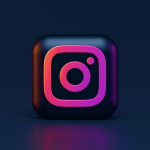Product design is the process of creating and developing new products. It involves considering the needs and desires of users to make items both functional and appealing. Good product design makes our everyday lives easier and more enjoyable.
In this blog, we will explore the stages of product design from concept to creation.
Conceptualization
Conceptualization is the first stage of product design. It is all about forming ideas and visions for a new product. Designers brainstorm and sketch out their thoughts during this phase.
At this stage, designers focus on conceptual design to plan the product’s essential features. They gather information about user needs and market trends. This helps in shaping a clear idea of what the final product should look like.
Designers also create initial mock-ups and prototypes. These models are simple versions of the product to test ideas. This step ensures the product concept is solid before moving to the detailed design stages.
Research
Research is a crucial part of product design. At this stage, designers gather data about what users need and want. They also look at current market trends to understand what is popular.
Research helps designers create products that solve real problems. By studying their competition, they can spot gaps in the market. This way, they can add unique features to their designs.
Designers also use surveys and interviews to get direct feedback from potential users. This information guides them in improving the product. Well-conducted research leads to better, more successful products.
Ideation
Ideation is where creativity comes into play. At this stage, designers generate a range of ideas and solutions. They use tools like brainstorming sessions and mind maps to explore possibilities.
This phase encourages thinking outside the box. It’s important to consider all options and not judge ideas too early. The goal is to develop innovative and effective product concepts.
Designers often work in teams during ideation. Group collaboration can lead to more diverse ideas. This teamwork helps refine product design ideas into practical solutions that will be developed further.
Design and Development
Design and development is where ideas turn into real products. During this phase, detailed plans and specifications are created. Industrial design focuses on making products both functional and aesthetically pleasing.
Engineers and designers work together to solve any technical challenges. They refine the product’s features and appearance. Prototypes are made and tested to ensure everything works as planned.
The team makes changes based on feedback from testing. Adjustments are crucial for improving the product’s performance. This thorough process helps create high-quality products that meet users’ needs.
Testing
Testing is a vital phase in product design to ensure quality and functionality. The product undergoes various tests to identify issues. These tests check for durability, safety, and user satisfaction.
Feedback from testing helps designers make necessary improvements. Addressing issues found during tests is crucial to the product’s success. This step ensures that the final product meets all standards and user expectations.
Different types of testing include usability testing, stress testing, and performance testing. Usability testing checks how easy the product is to use. Stress testing ensures the product can withstand intense conditions. Performance testing assesses the product’s overall function.
Refinement
Refinement is about making the final changes to the product. After testing, designers fix any issues that were found. They enhance the product’s features to ensure it performs well.
The team reviews all feedback from the testing phase. They make the necessary adjustments to improve the design. This step is crucial for creating a reliable product.
Refinement ensures the product meets all user needs. Final tweaks can make a big difference in quality. The goal is to have a polished and well-functioning product before launch.
Branding and Aesthetics
Branding and aesthetics are integral to product design. Branding gives a product its identity, while aesthetics make it visually appealing. Both aspects play a vital role in attracting customers.
Effective branding creates emotional connections with customers. This helps build loyalty and trust. Aesthetics enhance the overall purchasing experience for customers.
Designers must consider the brand’s values and target audience when developing the product’s visual elements. These elements include packaging, logo, color scheme, and more.
Production
Production is the final stage of product design. In this phase, the product is manufactured in large quantities. Detailed plans and processes ensure that each item meets the highest quality standards.
Efficient production methods are crucial.
They help in reducing costs and time.
Automation and advanced technologies often play a key role in this step.
Once production begins, continuous monitoring is necessary. Quality control checks are performed regularly. This guarantees that every product performs as expected.
Launch
Launch is the stage where the product is introduced to the market. The team creates a marketing plan to promote the product. Clear communication about the product’s benefits is key to attracting customers.
A successful launch requires strategic planning and timing. Companies often use social media, advertisements, and events to increase awareness. The goal is to create excitement and drive sales.
After the product is launched, the team monitors its performance. Customer feedback is collected to understand how well the product is received. This helps with further improvements and future product designs.
Post-Launch Evaluation
Post-launch evaluation is essential to understand a product’s success and areas for improvement. The team collects customer feedback to identify issues and areas for enhancement. Analyzing sales data helps determine if the product meets market demand.
The evaluation also includes monitoring reviews and ratings. This information guides future product updates and new designs. The goal is to maintain high customer satisfaction and continuously improve the product.
Continuous support and updates keep the product relevant. Tracking long-term performance helps in planning future strategies. This phase ensures the product evolves based on user needs and market trends.
The Power of Product Design
Product design is essential in making great products. It involves creativity, research, and testing to meet user needs. A strong design can make products successful and loved by customers.
Proper planning and ongoing improvements are key. Listening to customer feedback helps make products better. Great design can set a product apart in the market. It’s an important factor for success and should never be overlooked.
Did this article help you? If so, take a look at some of our other blog posts for more informative reads.













